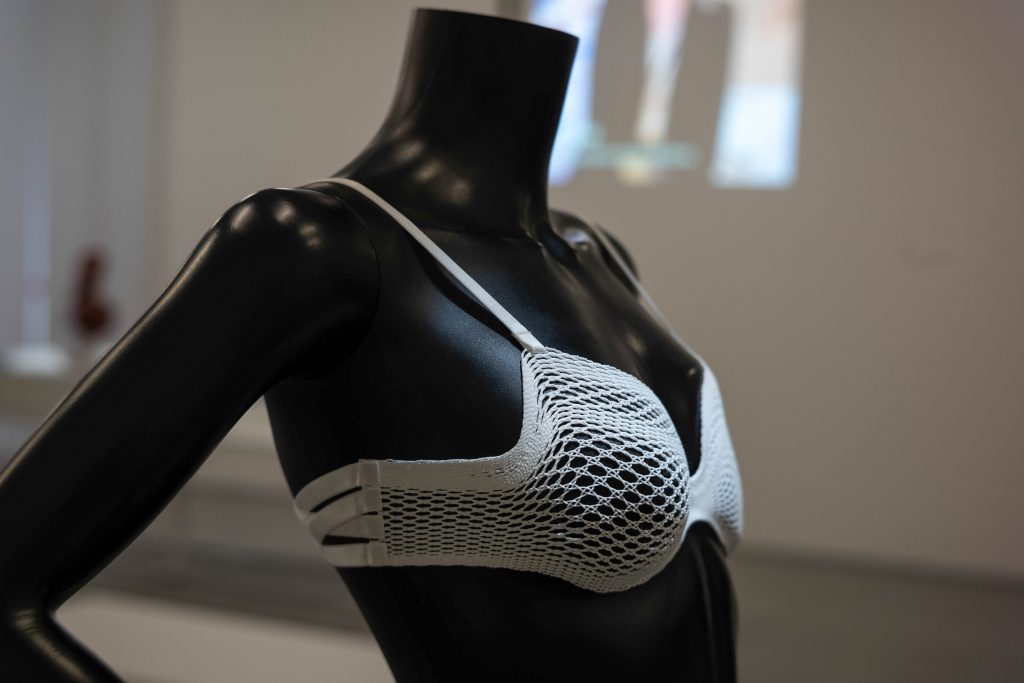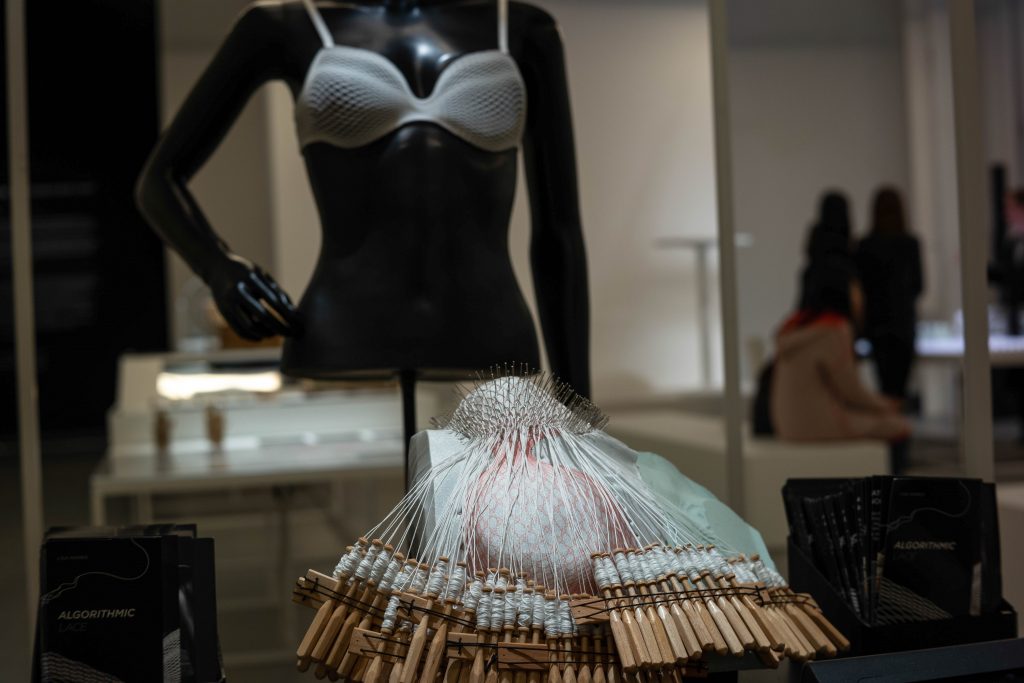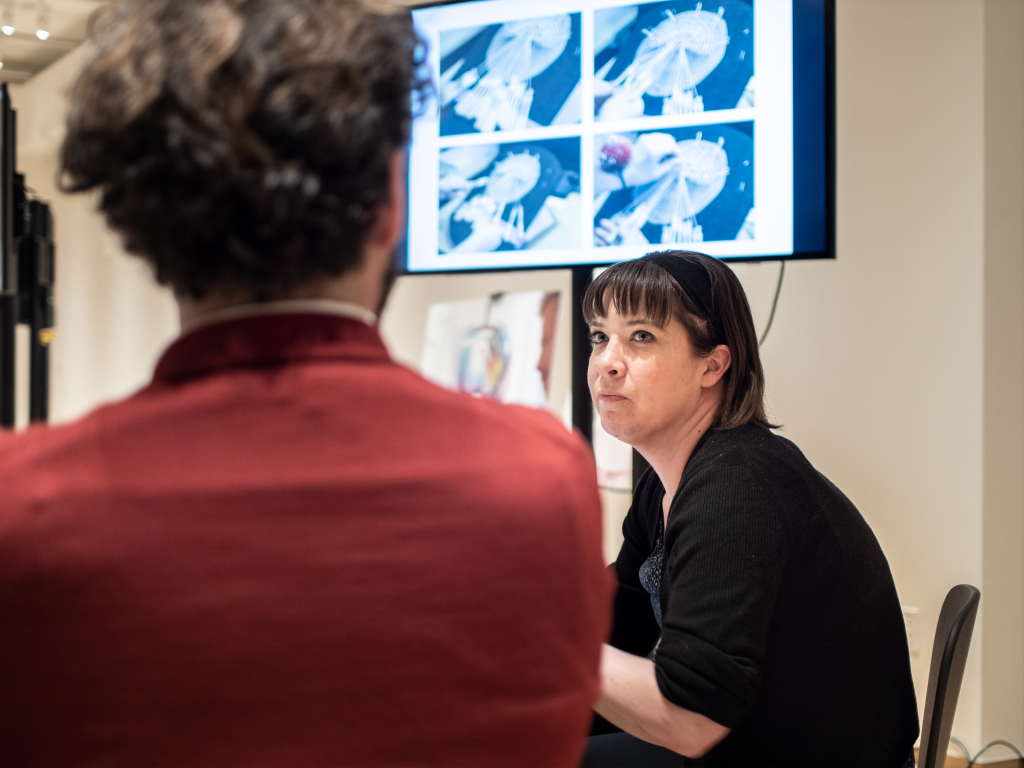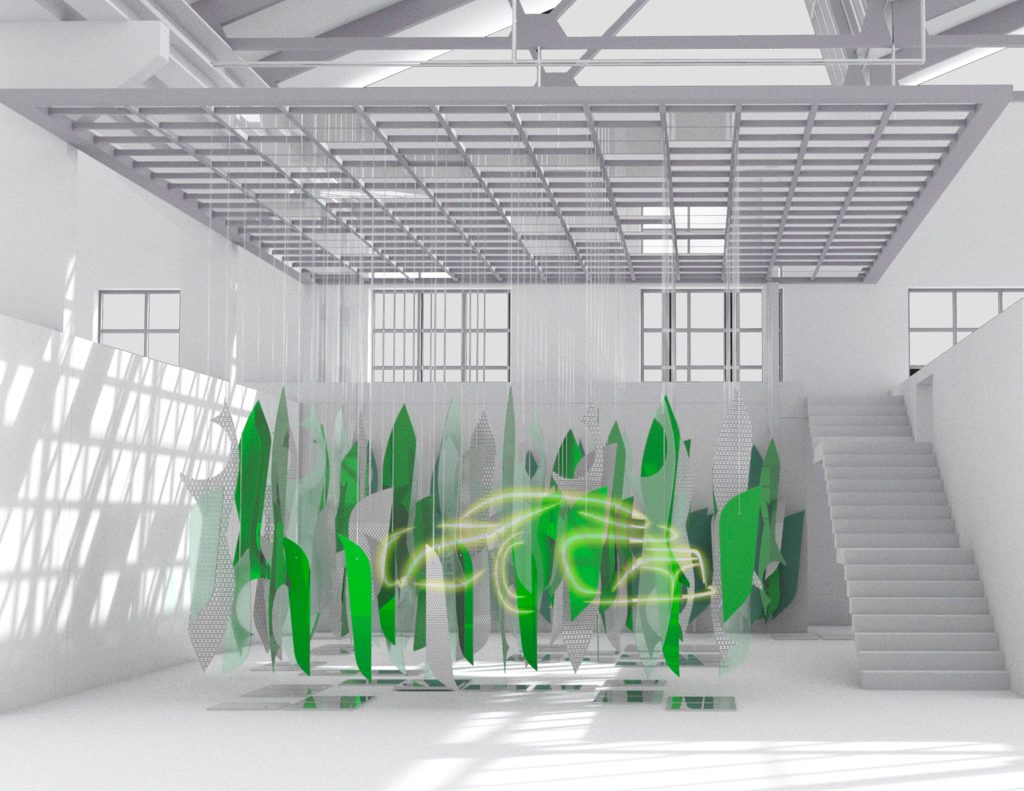Lexus Design Award 2019 Winner: Lisa Marks’ Algorithmic Lace
Tradition meets tech and wellbeing with this innovative 3D lace

The 2019 Lexus Design Award winner was awarded today at Milan Design Week. A few weeks back, the semi-finalists were chosen and they each brought their concepts on this year’s theme—Design for a Better Tomorrow—to prototype and received mentoring from design industry experts Jessica Rosenkrantz, Shohei Shigematsu, Jaime Hayon and Sebastian Wrong. Today, the judges bestowed one of the six finalists (out of more than 1,500 submissions from all over the world) with the winning project: industrial designer and Georgia Institute of Technology faculty Lisa Marks for her project Algorithmic Lace, which allows traditional bobbin lace to use 3D instead of flat forms in its creation.

“The project really started by looking at ways we can use traditional craft in industrial design,” Marks tells us, at the Lexus Design Award event. “Part of it is that we’re really losing handcrafts by the dozens—in a few generations they’ll just go away. As an industrial designer and an industrial design educator we need a bit more diversity in the skills that we value in industrial design.”
There’s a long history of things that are maybe more ‘feminine’ mediums being devalued
“I see students all the time that come in with woodworking skills that are really high valued, but students that come in craft skills maybe don’t feel as confident. And why is that? There’s a long history of things that are maybe more ‘feminine’ mediums being devalued. I wanted to bring that into mainstream industrial design and have things be a little bit more equal across different lines,” she explains.

Marks’ work looks to service and support women who will face invasive breast cancer (one in eight) and the similarly growing number of women who forgo reconstructive surgery and implants. Algorithmic Lace is a first-of-its-kind bra that’s hand-crafted based on body-scans and consultations. The final wearable avoids sensitive areas post-surgery and highlights—rather than hides—the wearer’s shape. That means certain curves can be accentuated and accommodated to present fullness without the need for secondary or base-layer prosthetics.

“This is traditionally how (lace making is) done. It’s this very traditional bobbin lace. It’s a series of cross and twist and pinned, and cross and twist and pinned,” Marks continues. “I started playing around with that and analyzing a single stitch algorithmically, then, building new patterns with it and creating these different types of patterns. You can get some three-dimensional optical illusions going and there’s a modern, interesting appeal. I started becoming curious about whether I could make it three-dimensional and it’s really pretty simple. It’s a very traditional thing: the same type of stitch, the same types of tools, but you’re building it over a form instead of a flat pillow.”
Marks details how just one prototype came to be, but on a larger scale this product could very well revitalize an industry in rapid decline. It gives work to lace-makers because the three-dimensional lace can only be made by hand—there isn’t a machine that can do the work. It’s a way to infuse technology into a centuries-old industry—without replacing workers with it.

“I wanted to apply it to something that was really connected to lace historically. And for me, that is lingerie. That’s what comes to mind. And the fact that this is customizable, it has to be handmade because machines can’t work this way,” she says. “Thinking about who needs the most variation, who needs the most customization, and there are just so many women with breast cancer. About 50% of women that have a mastectomy choose to not have reconstructive surgery. We might not realize it walking down the street but there’s a very large number of women who are using external prosthetics (which are) very heavy and use a lot of irritating adhesive. Scar tissue is really sensitive and can’t tolerate underwires and things that normal bras use. When you’re trying to put something on your body, and then you have to make it fit, and it’s not really for you, I can imagine that’d wear on your confidence.”

Marks is targeting an issue plaguing millions with the first iteration of Algorithmic Lace—but, she sees ways for the material to someday trickle into other situations, too.
“Three-dimensional lace could also be used in a number of ways, in a number of products that could be in our everyday lives—housewares, objects, decorative items, different types of upholstery. Although it would take a lot more research, I could imagine where it could be applied to things like all of the customized shoes that are going on and all of the other customized things. Anything that goes on the body that needs kind of variable levels of support or different structures.”
Our congratulations to Lisa and her winning project, Algorithmic Lace.












